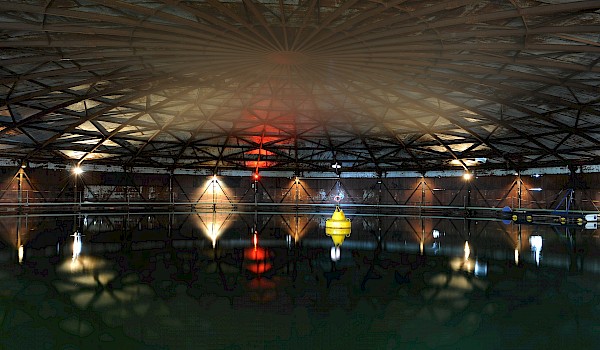Diving
The diving gasometer in the Landscape Park Duisburg Nord is the largest indoor diving basin in Europe. Divers will find an underwater landscape which in form and size has no equal.

The gasometer, built in 1920, has found a new use which can only be described as extreme sport. Here divers can float 13 metres down to the bottom and explore a unique underwater landscape. A shipwreck, an aircraft wreck, two cars, an artificial reef and lots of other objects are an invitation to every diver to come and explore and discover.
The huge steel basin was formerly used for the intermediate storage of so-called blast furnace gas (BFG), a by-product of the smelting process in the blast furnace. Once purified, it could then be used to power machines in the power plant.
In the production of pig iron, blast furnace gas is produced as an inevitable by-product, its main constituents being carbon monoxide and nitrogen. This blast furnace gas was used in a purified form to power large gas machines in the power plant.
Since the production and use of blast furnace gas were not always at the same level, a gasometer was used as a large holding facility. When the works was operational, this wet gasometer could hold up to 20,000 cubic metres of gas and was thus useful as a flexible storage vessel.
The functional principle of the wet gasometer can be compared to a jug filled with water into which a second jug is placed upside down. The gas was able to flow through a pipe above the water, thus raising the upper holder by gas pressure. When the gas was removed, the gasometer fell correspondingly.
Today the gasometer is a diving centre, the like of which is not to be found anywhere else in Europe. With a depth of 13 metres, an artificial reef, shipwreck and other features, a very special type of underwater world has been created in the shell of the former gas holder.
1920
Basin: 14.8 m
Scaffolding: 25.9 m
20000 m³
45.8 m
1999
Gas processing
Diving centre
Steel lattice framework and riveted steel sheet tank